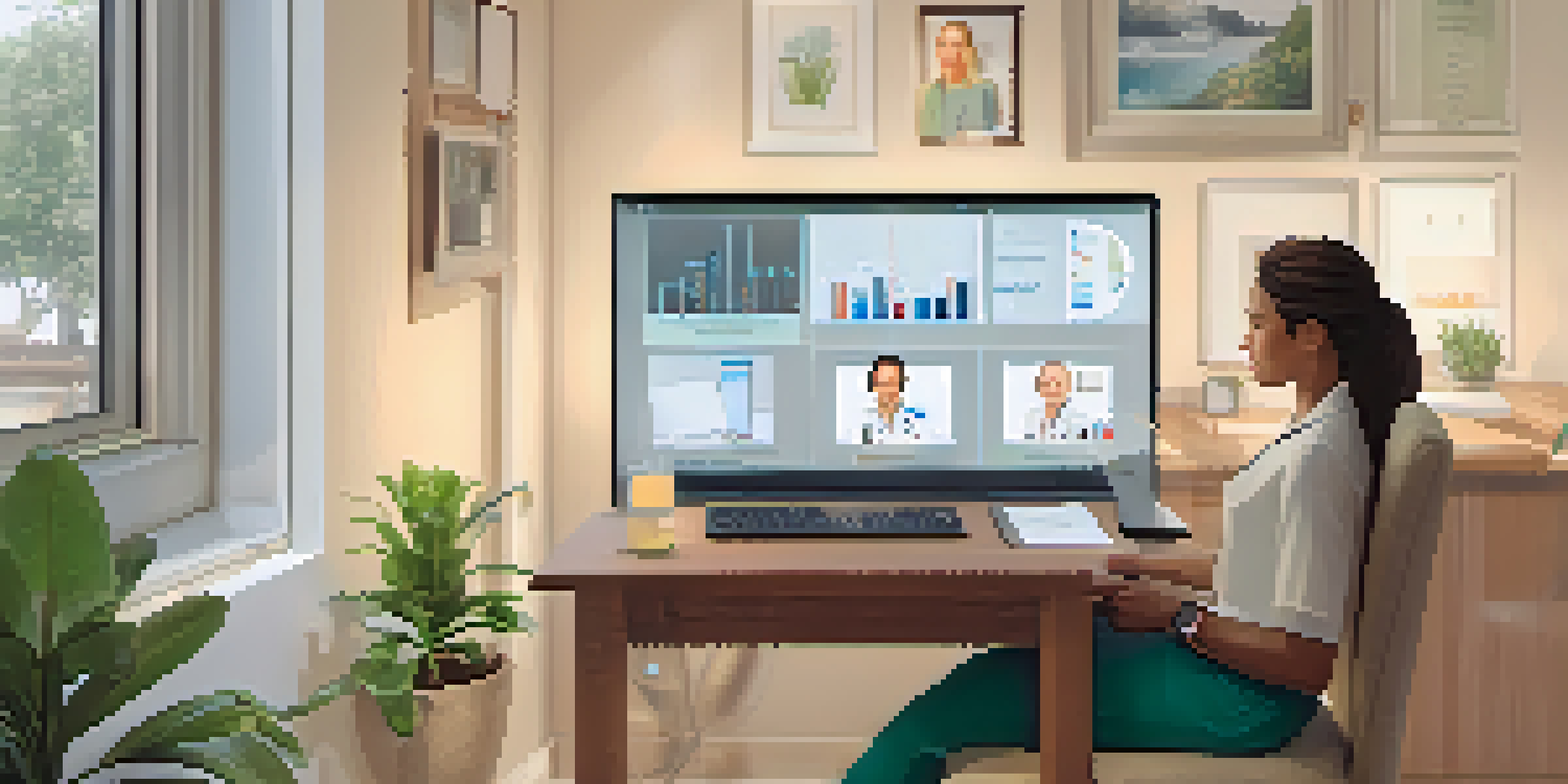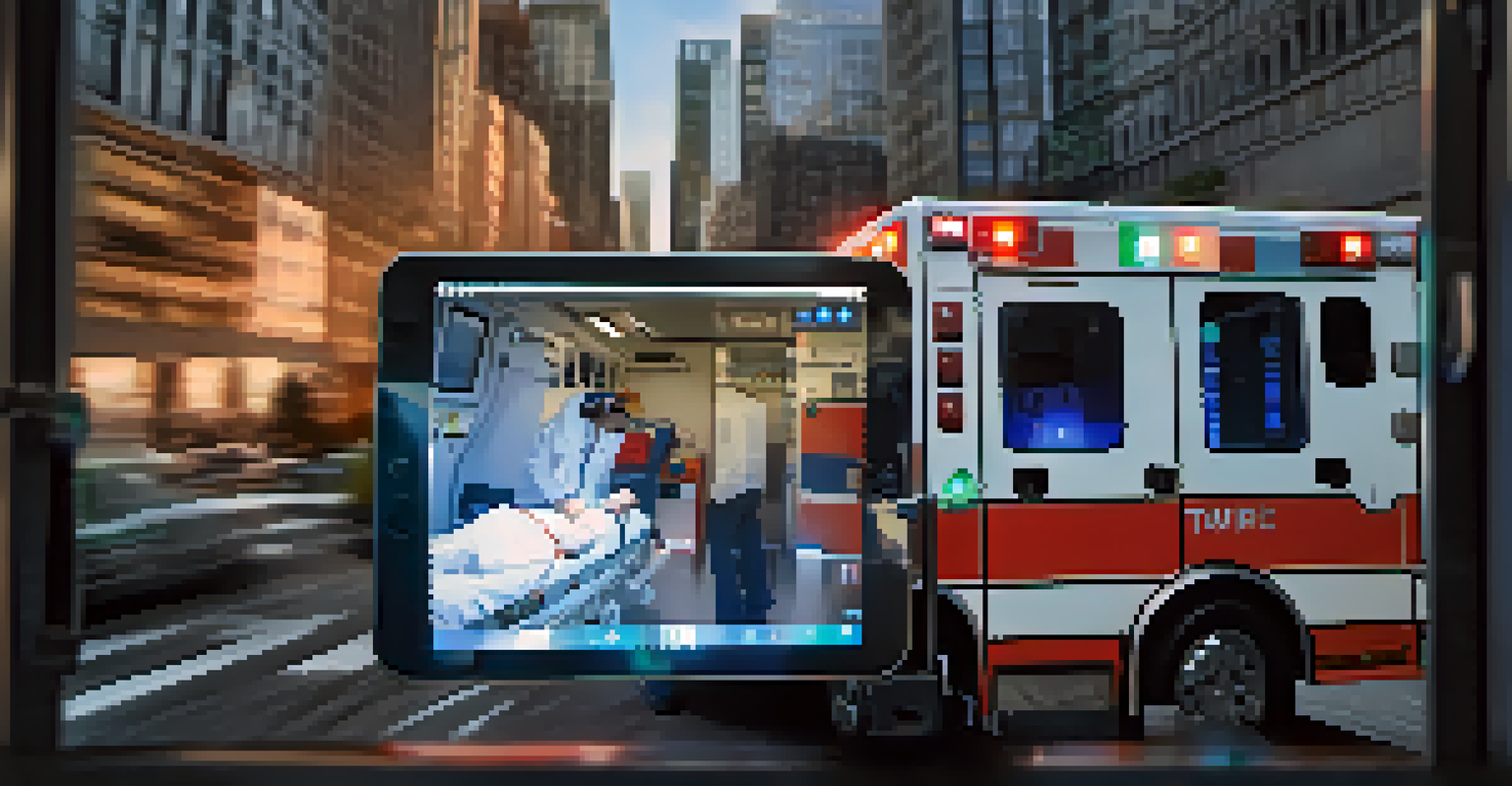The Impact of 5G on Telemedicine: Faster, Better, Stronger

Understanding 5G: The Next Generation of Connectivity
5G, or fifth-generation wireless technology, is designed to offer faster data speeds, lower latency, and greater connectivity. Unlike its predecessor, 4G, 5G can handle a significantly higher number of devices simultaneously, which is crucial for telemedicine applications. With this enhanced connectivity, healthcare providers can deliver services more efficiently, making remote consultations seamless and effective.
The future of healthcare is not just about technology, but about the ways we can connect people with the care they need, when they need it.
For instance, imagine a doctor in New York providing real-time consultations to a patient in rural Montana. Thanks to 5G, the video call would be smooth and nearly lag-free, allowing for immediate diagnosis and advice. This kind of connectivity not only enhances patient experience but also improves health outcomes by making timely medical care more accessible.
As 5G continues to roll out, it presents a fantastic opportunity for healthcare systems to innovate and expand their telemedicine capabilities. The implications are vast, from remote surgeries to continuous health monitoring, paving the way for a more connected and responsive healthcare landscape.
Enhanced Remote Consultations with 5G Technology
One of the most significant impacts of 5G on telemedicine is the improvement of remote consultations. With faster speeds and lower latency, healthcare professionals can conduct thorough examinations over video, making it feel almost like an in-person visit. This is particularly beneficial for patients who live in remote areas or have mobility issues, allowing them to access healthcare without the stress of travel.

Consider a scenario where a patient needs to consult a specialist who is hundreds of miles away. With 5G, they can have a high-definition video consultation, share real-time data from wearable devices, and receive immediate feedback. This not only saves time but also enhances the overall patient experience, as they feel more engaged and involved in their healthcare decisions.
5G Enhances Telemedicine Efficiency
The introduction of 5G technology significantly improves remote consultations and healthcare accessibility for patients in underserved areas.
Moreover, the clarity of communication facilitated by 5G technology can lead to better diagnosis and treatment plans. This allows healthcare providers to make informed decisions quickly, thus improving the quality of care provided to patients.
Real-Time Health Monitoring: A Game Changer
5G technology enables real-time health monitoring through connected devices, such as wearables and remote sensors. These devices can transmit data instantly, allowing healthcare providers to track patients' vital signs continuously. For example, imagine a heart patient wearing a smartwatch that sends alerts to their doctor about irregular heartbeats, enabling proactive care.
Telemedicine has the potential to revolutionize healthcare by breaking down barriers and making quality care accessible to everyone.
This instant communication can lead to faster interventions in critical situations. For instance, if a patient's blood sugar levels spike unexpectedly, their healthcare team can respond immediately, potentially preventing serious complications. The ability to monitor patients in real-time not only enhances the quality of care but also empowers patients to take control of their health.
As this technology evolves, we can expect even more innovative solutions that integrate 5G connectivity with artificial intelligence and data analytics. This will further enhance the ability to provide personalized care based on real-time data.
Improving Emergency Response with 5G
In emergency situations, every second counts, and 5G technology is set to revolutionize how emergency medical services operate. With real-time data transmission, first responders can access critical patient information before they even arrive at the scene. This allows them to prepare for treatment and allocate resources more effectively.
Imagine an ambulance equipped with 5G technology that can communicate directly with hospitals. As patients are being transported, paramedics can send vital signs and medical history, enabling hospital staff to prepare for immediate care upon arrival. This kind of proactive approach can significantly improve patient outcomes in emergencies.
Real-Time Monitoring Saves Lives
5G enables instant data transmission from connected devices, allowing healthcare providers to monitor patients continuously and respond quickly to critical situations.
Additionally, 5G's ability to support augmented reality (AR) applications can enhance training for emergency responders. They can access real-time guidance from specialists during critical care situations, ensuring that they provide the best possible treatment in high-pressure environments.
The Role of 5G in Mental Health Services
Telemedicine has greatly expanded access to mental health services, and 5G technology can take it a step further. With faster, more reliable connections, therapists can conduct video sessions that feel more personal and engaging. This can help patients feel more comfortable, leading to better communication and therapeutic outcomes.
Consider the impact on individuals in underserved areas where mental health professionals are scarce. With 5G, they can connect with qualified therapists from anywhere in the world, making mental health support more accessible than ever. This can help reduce the stigma associated with seeking help, as patients can engage in therapy from the privacy of their own homes.
Moreover, 5G technology can facilitate group therapy sessions and support groups through stable video conferencing platforms. This can foster community and provide invaluable support for individuals facing similar challenges, creating a more connected and supportive environment for mental health care.
Overcoming Challenges: Security and Privacy Concerns
As with any technological advancement, the transition to 5G in telemedicine comes with its own set of challenges, particularly concerning security and privacy. The increased connectivity means more devices are connected to the network, which can potentially expose sensitive patient data to cyber threats. It's crucial for healthcare organizations to invest in robust cybersecurity measures to protect patient information.
For instance, end-to-end encryption can help safeguard data transmitted over 5G networks. By ensuring that only authorized personnel can access patient information, healthcare providers can maintain trust and comply with regulations like HIPAA. Patients need to feel confident that their data will remain private, especially when engaging in telehealth services.
Future Innovations in Healthcare
The future of telemedicine with 5G promises advancements like virtual reality consultations and remote robotic surgeries, enhancing patient-centered care.
Additionally, ongoing training and awareness programs for healthcare staff about potential threats and best practices can help mitigate risks. Addressing these security concerns is essential to fully leverage the benefits of 5G technology in telemedicine.
The Future of Telemedicine with 5G: A Vision Ahead
Looking ahead, the integration of 5G technology into telemedicine presents a vision of a more connected and efficient healthcare system. We can expect to see innovations such as virtual reality (VR) consultations, remote robotic surgeries, and advanced AI diagnostics becoming commonplace. The possibilities seem endless as technology continues to evolve.
Moreover, as 5G networks expand globally, more patients will have access to high-quality care, regardless of their geographical location. This could lead to a more equitable healthcare landscape, where individuals in remote or underserved areas receive the same level of care as those in urban centers.

Ultimately, the impact of 5G on telemedicine is a step towards a future where healthcare is not only faster and more efficient but also more patient-centered. As we embrace these advancements, we can expect a healthier world where everyone has access to the care they need.